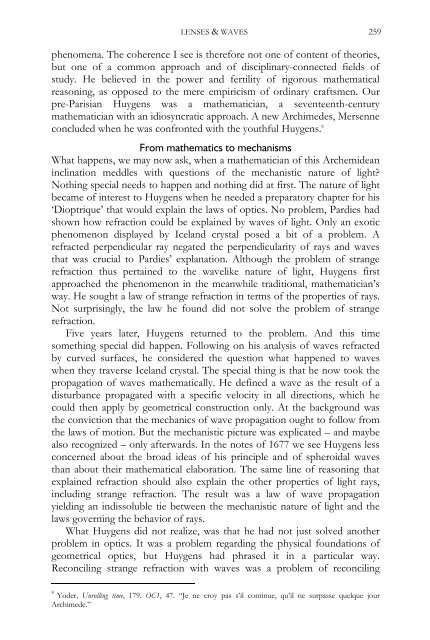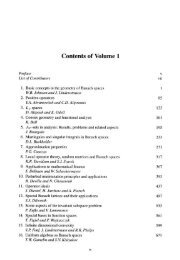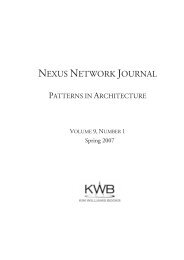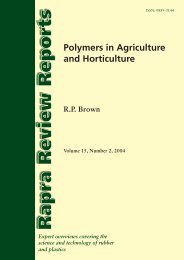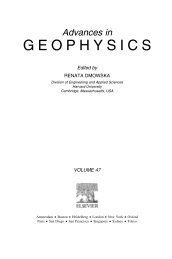Lenses and Waves
Lenses and Waves
Lenses and Waves
You also want an ePaper? Increase the reach of your titles
YUMPU automatically turns print PDFs into web optimized ePapers that Google loves.
LENSES & WAVES 259<br />
phenomena. The coherence I see is therefore not one of content of theories,<br />
but one of a common approach <strong>and</strong> of disciplinary-connected fields of<br />
study. He believed in the power <strong>and</strong> fertility of rigorous mathematical<br />
reasoning, as opposed to the mere empiricism of ordinary craftsmen. Our<br />
pre-Parisian Huygens was a mathematician, a seventeenth-century<br />
mathematician with an idiosyncratic approach. A new Archimedes, Mersenne<br />
concluded when he was confronted with the youthful Huygens. 8<br />
From mathematics to mechanisms<br />
What happens, we may now ask, when a mathematician of this Archemidean<br />
inclination meddles with questions of the mechanistic nature of light?<br />
Nothing special needs to happen <strong>and</strong> nothing did at first. The nature of light<br />
became of interest to Huygens when he needed a preparatory chapter for his<br />
‘Dioptrique’ that would explain the laws of optics. No problem, Pardies had<br />
shown how refraction could be explained by waves of light. Only an exotic<br />
phenomenon displayed by Icel<strong>and</strong> crystal posed a bit of a problem. A<br />
refracted perpendicular ray negated the perpendicularity of rays <strong>and</strong> waves<br />
that was crucial to Pardies’ explanation. Although the problem of strange<br />
refraction thus pertained to the wavelike nature of light, Huygens first<br />
approached the phenomenon in the meanwhile traditional, mathematician’s<br />
way. He sought a law of strange refraction in terms of the properties of rays.<br />
Not surprisingly, the law he found did not solve the problem of strange<br />
refraction.<br />
Five years later, Huygens returned to the problem. And this time<br />
something special did happen. Following on his analysis of waves refracted<br />
by curved surfaces, he considered the question what happened to waves<br />
when they traverse Icel<strong>and</strong> crystal. The special thing is that he now took the<br />
propagation of waves mathematically. He defined a wave as the result of a<br />
disturbance propagated with a specific velocity in all directions, which he<br />
could then apply by geometrical construction only. At the background was<br />
the conviction that the mechanics of wave propagation ought to follow from<br />
the laws of motion. But the mechanistic picture was explicated – <strong>and</strong> maybe<br />
also recognized – only afterwards. In the notes of 1677 we see Huygens less<br />
concerned about the broad ideas of his principle <strong>and</strong> of spheroidal waves<br />
than about their mathematical elaboration. The same line of reasoning that<br />
explained refraction should also explain the other properties of light rays,<br />
including strange refraction. The result was a law of wave propagation<br />
yielding an indissoluble tie between the mechanistic nature of light <strong>and</strong> the<br />
laws governing the behavior of rays.<br />
What Huygens did not realize, was that he had not just solved another<br />
problem in optics. It was a problem regarding the physical foundations of<br />
geometrical optics, but Huygens had phrased it in a particular way.<br />
Reconciling strange refraction with waves was a problem of reconciling<br />
8<br />
Yoder, Unrolling time, 179. OC1, 47. “Je ne croy pas s’il continue, qu’il ne surpasse quelque jour<br />
Archimede.”


